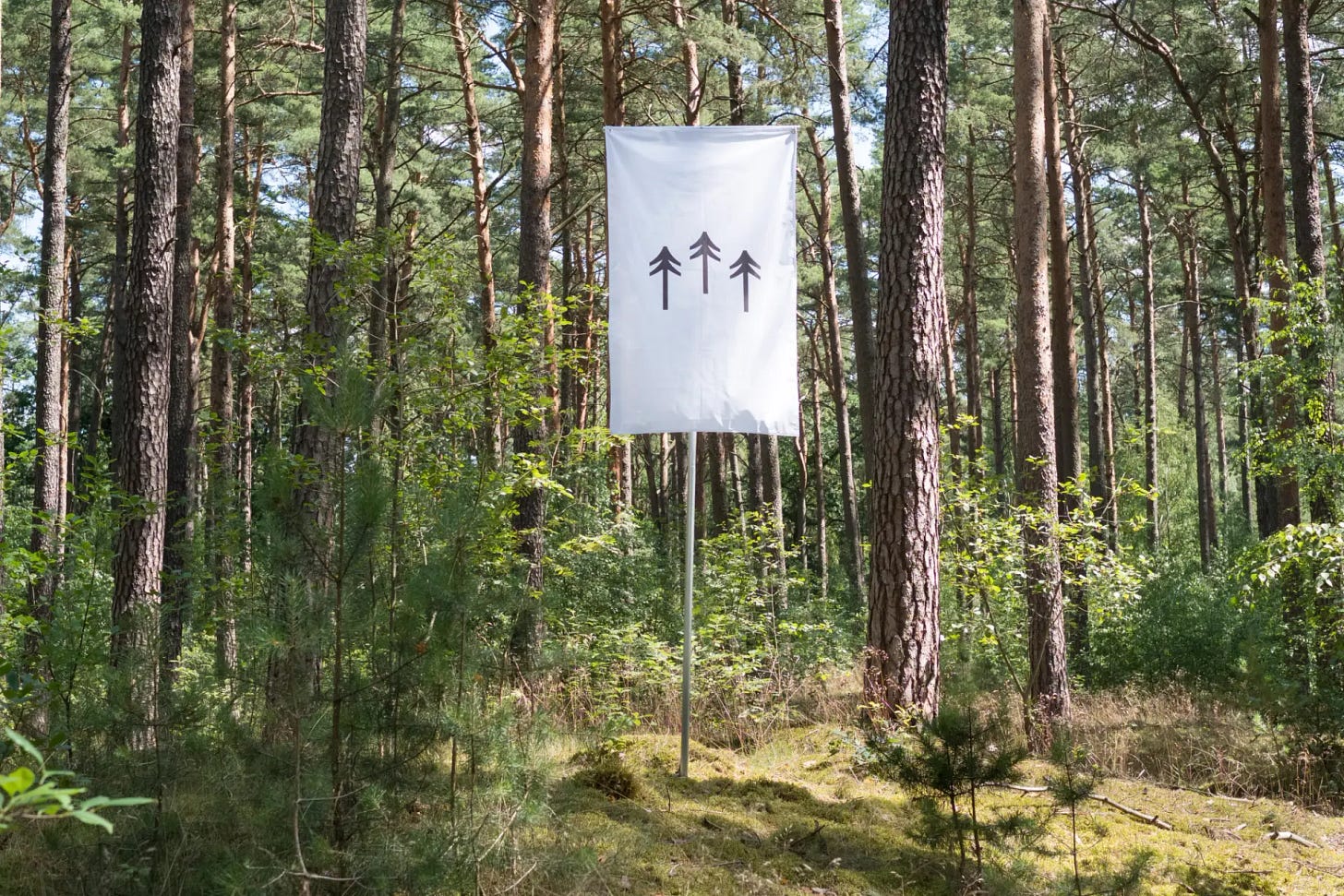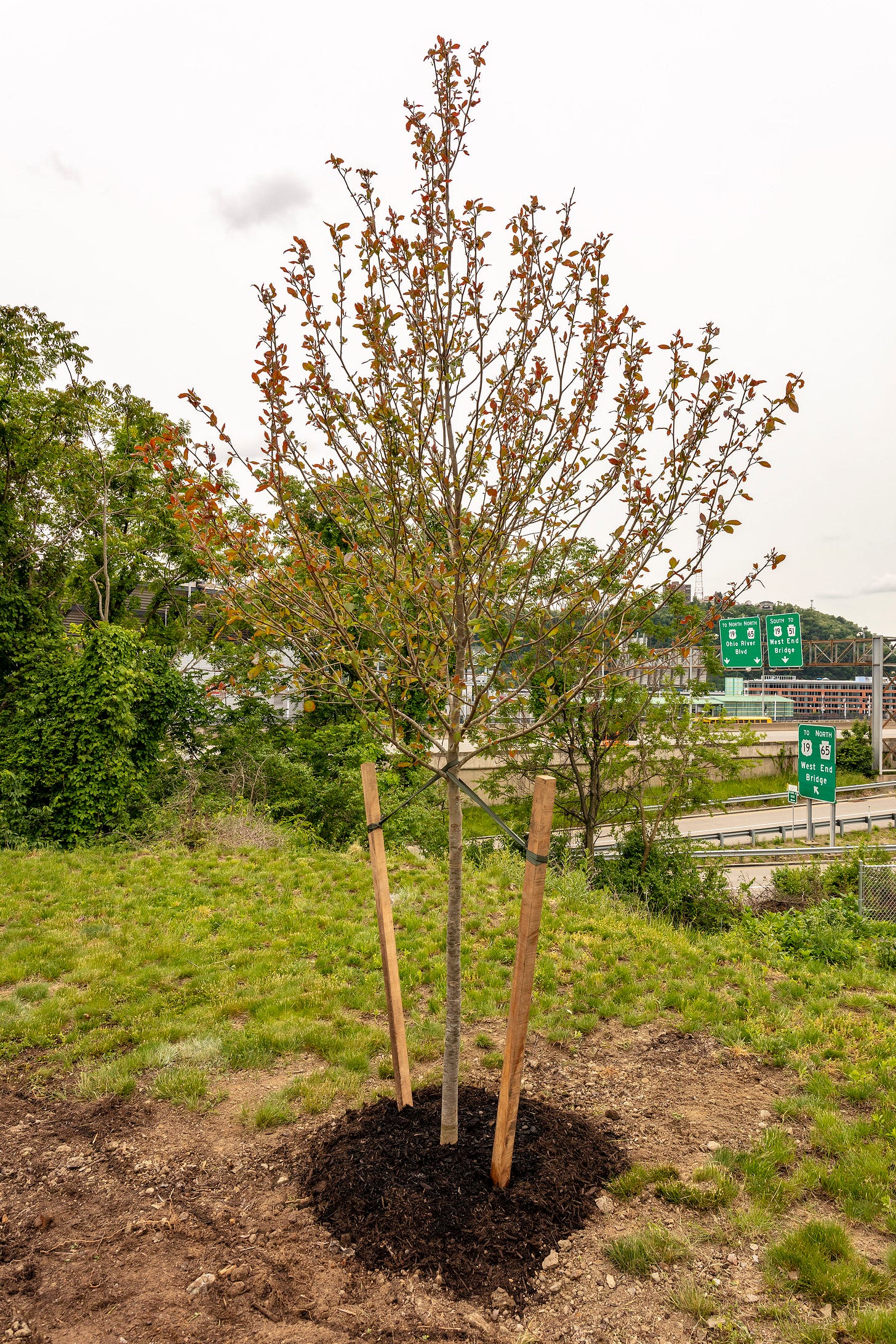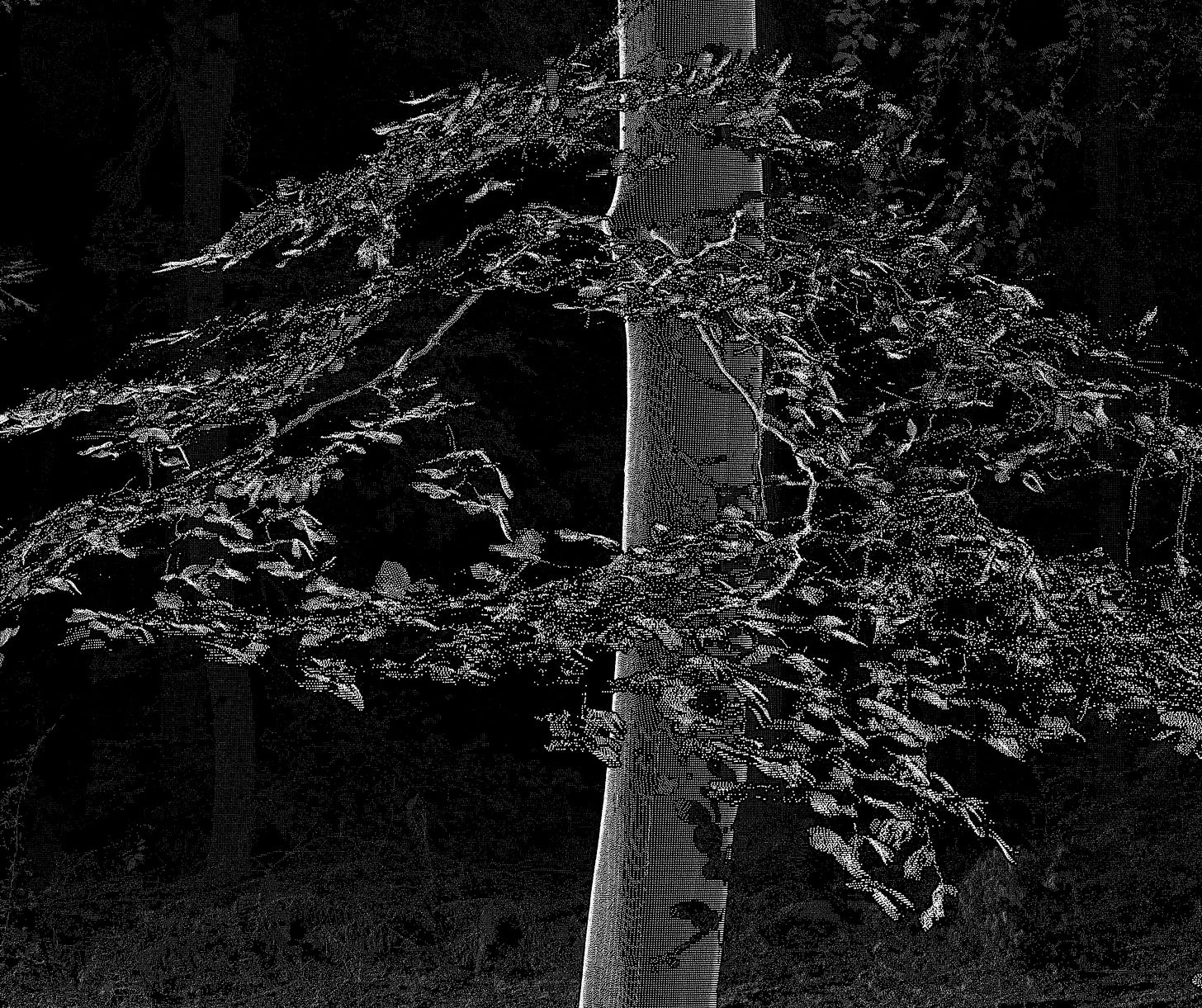Unit ⑧ Interviews: terra0
A conversation with Paul Kolling and Paul Seidler about the past and future of terra0.
We spoke with the art collective terra0, composed of Paul Seidler and Paul Kolling. After working on their vision for many years, they have just reached a new stage in which their project will scale up. For the conversation, which we summarized here, they told us about their journey, challenges and plans. If you want to read the full interview, follow the link to our blog post.
Paul Seidler and Paul Kolling are the co-founders of terra0. In our conversation, they discuss their artistic evolution from a speculative project to a practical approach to creating a resilient, generative forest ecosystem. In their first White Paper, terra0 initially explored the concept of autonomous forests owning themselves based on blockchain technology. Their concept initially focused on the possibilities of autonomous systems, minimizing or even erasing human involvement in controlling and managing forests. Such a scenario for non-human ownership sparked discussions about non-human personhood, ownership structures, property law relationships, and questions about integrations in specific jurisdictional frameworks.
As the project develops, Kolling and Seidler recognize the limitations of purely autonomous systems and the importance of integrating them with existing legal frameworks. Furthermore, their utopian thinking has shifted to pragmatic implementation in its current iteration, Autonomous Forest. Autonomous Forest operates through online communities and aims to use collective ownership to protect forest ecosystems from human exploitation. For this iteration, Kolling explains that they're implementing legal frameworks, digital platforms, and community-building events. The project will use blockchain tokens to identify DAO members, allowing contributions via cryptocurrency addresses rather than personal IDs, an approach that lowers entry barriers and democratizes participation.

terra0 — Can an augmented forest own and utilize itself? (2016) | Photos © terra0, https://terra0.orgKolling and Seidler acknowledge the challenges of integrating their concept into existing jurisdictions. For this purpose, smart contracts can act as governance tools to manage some aspects of traditional legal structures. In that light, their project has evolved to address the political and social challenges of collective ownership, with trust and human interaction becoming central. Meanwhile, they have moved away from the original emphasis on complete automation.
Discussing the limitations of AI and automation in forest management, Seidler points out the dependence of ecological analysis on human observation since a complete automation of such operations would require countless resources. Terra0's current mission focuses on the power of collective ownership and its role in protecting forest ecosystems from external influences. Kolling describes their project as offering a new perspective on collective management, enabling participation from those with limited financial means.
The project adopts an ecological approach involving minimal interference to allow forest ecosystems to gain resilience. Kolling expresses confidence in an ecosystem's ability to recover, especially after periods of intensive cultivation. In this light, traditional German conservation organisms often lack transparency in their operations and protection standards, fluctuating quality due to federalist governance structures and limited legislation terms. In contrast, terra0's approach offers several advantages, such as transparency in governance and decision-making, unchangeable statutes that prevent protection status reversal due to political shifts, or minimal human interference while maintaining public access.
Addressing environmental concerns about blockchain technology, Kolling and Seidler argue that the energy usage debate often overlooks blockchain's potential benefits and fails to compare it fairly with other industries and technologies. They suggest that measurements of blockchain energy consumption are hard to quantify accurately, emphasizing the importance of considering the purpose and context of energy consumption when making such comparisons.

A tree; a corporation; a person. (DAO #01, Black gum tree, Pittsburgh PA) (2022) at the 58th Carnegie International, Carnegie Museum of Art Pittsburgh | Photos © terra0, https://terra0.orgTerra0 has evolved from a speculative concept to a practical approach to ecosystem protection. This crucial transition highlights the complexities of pursuing new models for collective ownership and environmental stewardship, as it demands balancing technological innovation, as well as legal frameworks. By combining blockchain technology, collective ownership models, and ecological preservation principles, terra0 aims to test what's possible in these areas.
Autonomous Forest serves as an example of how artistic exploration can lead to practical solutions for real-world challenges. By creating a system that allows for broader participation and long-term commitment to ecosystem protection, terra0 presents an innovative model that could potentially enhance existing conservation efforts, proving that technology and community-driven initiatives can work together to address pressing environmental issues.
Regarding the environment, the interview concludes with a broader discussion on energy consumption across various sectors, including art production and significant sporting events. Kolling and Seidler stress the need to reconsider energy production and use throughout society, rather than focusing solely on individual technologies or industries.
The project's development reflects a shift from machine autonomy to collective ownership and its political, legal, and social challenges. As the project continues to develop and implement ideas, it will likely face challenges in balancing technological solutions with the practical realities of forest management. Therefore, trust and human interaction have become central to the project alongside its technological essence. Ultimately, terra0's willingness to adapt its approach and engage with the technological, ecological and social aspects of its vision suggests a promising path forward.
Follow this link if you want to read the full version of the interview.
terra0 is an art collective exploring the creation of hybrid ecosystems in the technosphere. Founded in 2015, terra0 refers to both the work of art and the group of artists. The group's first work, the terra0 whitepaper (2016), based on research in areas of distributed ledger technology (DLT), ecology, and economics – proposed technologically-augmented ecosystems that are able to act as agents in their own right. terra0's artistic practice in recent years has focused on conducting experiments that identify, evaluate, and critically reflect on the inherent claims of the first white paper.
terra0 has been exhibited at the 58th Carnegie International, the 17th International Architecture Exhibition — La Biennale di Venezia, Canadian Centre for Architecture Montreal, The Shed New York City, Kunsthalle Zürich, Francisco Carolinum Linz, Chronus Art Center Shanghai, Furtherfield Gallery London, Schinkel Pavillon Berlin, and Vienna Biennale, among others.
A full CV can be accessed in cv.terra0.org.


